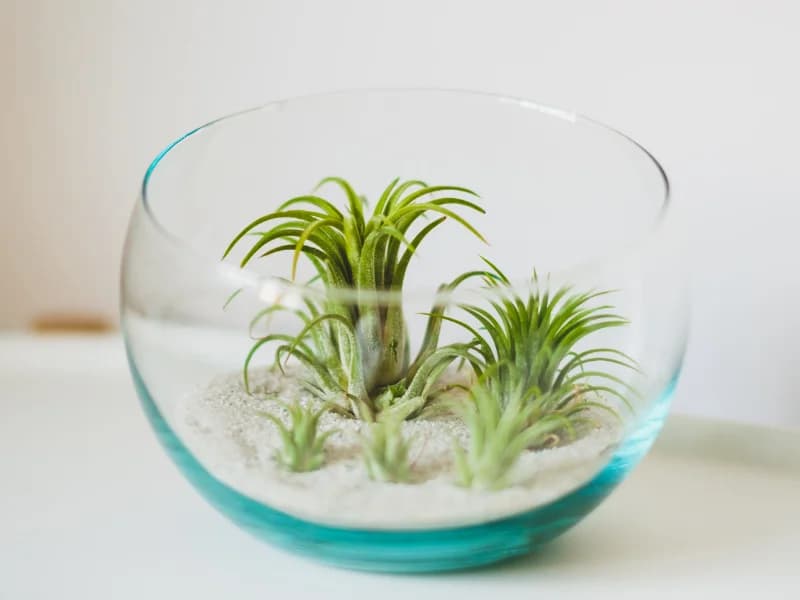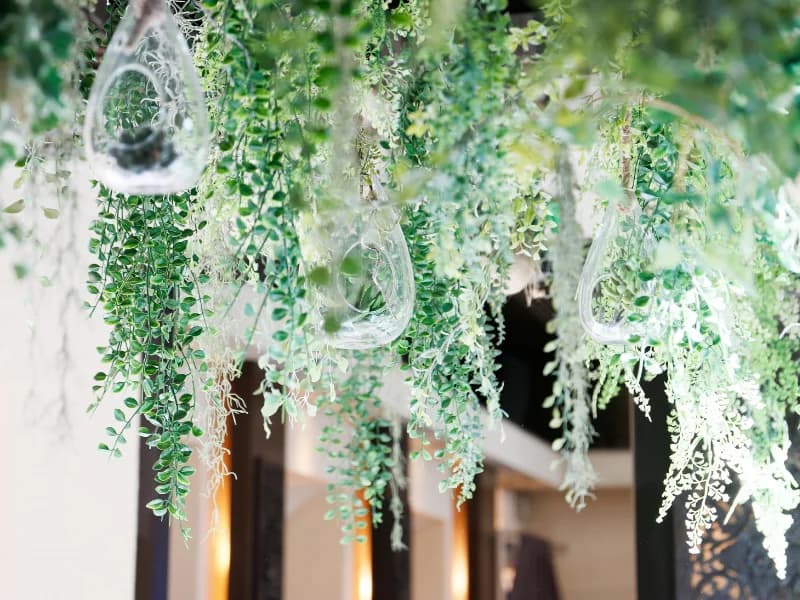Written by Hannah Kingston on October 12, 2021
Air plants are a wonderful house plant option given that they are an easy variety to care for and for the fact that they can be displayed in super creative ways.
Air plants are a unique variety for a number of reasons, mainly because they do not require roots in soil to grow, i.e. they do not need to be planted in a pot to grow. Plant care for air plants is not difficult but it is quite specific. In this article, we are going to talk you through what air plants are as well as how to care for them.
What are air plants?
Air plants are members of the bromeliad family. Air plants absorb moisture and nutrients through their leaves, instead of through their roots. Air plants vary in how they look and feel, some are large with broad, strap-like leaves, while others are tiny with thread-like leaves.
Air plants are native to the southern U.S., Central and South America, and Mexico. The great thing about air plants is that they can live in a wide range of climates.
As air plants absorb moisture through their leaves, they prefer warm, humid conditions. In winter months, air plants require regular watering to make up for the lack of humidity in most homes.
Air plants use their small roots to attach themselves to the branches of trees and shrubs, rather than growing in the ground. Because they don’t rob nutrients from their host plant, air plants are not considered parasites. Instead, they just use their host as an anchor and a place to live.

How to care for air plants
There are a couple of things to bear in mind when it comes to properly caring for air plants including:
- Hydrating your air plants
- Ensuring your air plants receive enough light
- Fertilising your air plants
- Getting the temperature right

Hydrating your air plants
Even though air plants do not require soil for hydration, they do require hydration. Many people think that air plants can live on air alone, hence their common name. But that’s definitely not the case. Air plants are native to humid tropical environments, and it is likely that the common home will not match these humidity levels.
There are two ways that you can ensure your plants are receiving the hydration they require.
1. Misting: Use a spray bottle to spritz air plants with water every day or two. After spraying the entire plant, place the damp air plant on a towel to dry for a few hours before putting it back in its decorative container or arrangement.
2. Place in a bowl or sink : Soaking your air plants really allows the water to soak into the plants. To water air plants this way, fill a bowl or sink with water and float the air plants in the water for 20 minutes to an hour every week. Then, take the plants out of the water, tip them upside down so any excess water can drain away, before putting them back on display.
Ensuring your plants receive enough light
It’s essential to ensure that your plants are receiving enough light. Bright but indirect light is the best. A west, east, or south-facing window will do. If you don’t think your air plant is getting enough light, supplemental lighting via a fluorescent light. Air plants enjoy spending the summer outdoors, but be sure to put them in a location with filtered sunlight. Direct sun during the hot summer months can “fry” them. And be sure to move the plants back indoors before fall’s first frost.
Fertilising your air plants
Fertilizing air plants isn’t a difficult task, nor is it an essential one. Though a monthly or quarterly application of fertilizer helps air plants thrive, to fertilize air plants, use an air plant-specific fertilizer or a bromeliad fertilizer a few times a year.
Getting the temperature right
Air plants love warm weather so it’s the other end of thermometer you need to watch. Protect your plants from anything colder than 45 degrees; they will die at those temperatures. Ensure that your air plant lives in a part of the house that receives ample lighting and warmth.
Some more top tips:
- Prune dead and dying leaves
- Cut brown tips off the tops of your air plants
- Keep air plants away from vents or drafty areas in the home
- Aim to place air plants in a spot in the house that is 50 and 90 degrees F.